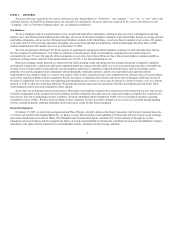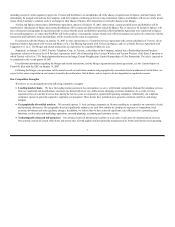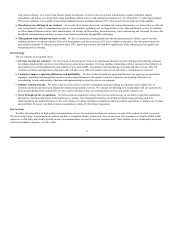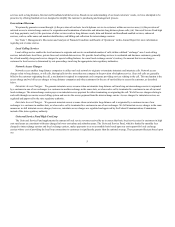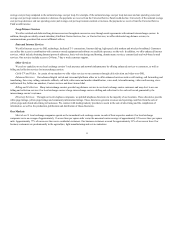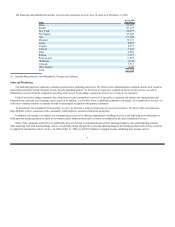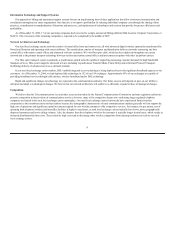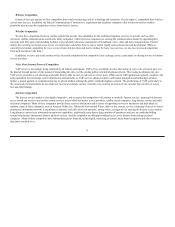FairPoint Communications 2006 Annual Report Download - page 14
Download and view the complete annual report
Please find page 14 of the 2006 FairPoint Communications annual report below. You can navigate through the pages in the report by either clicking on the pages listed below, or by using the keyword search tool below to find specific information within the annual report.
The Federal Communications Commission has made, and is continuing to consider, various reforms to the existing rate structure for charges assessed on
long distance carriers for connection to local networks. States often mirror federal rules in establishing intrastate access charges. In 2001, the Federal
Communications Commission adopted an order implementing the beginning phases of the Multi Association Group plan to reform the access charge system
for rural carriers. The Multi Association Group plan is revenue neutral to our operating companies. Among other things, the Multi Association Group plan
reduces access charges and shifts a portion of cost recovery, which historically has been based on minutes-of-use, to flat-rate, monthly per line charges on end-
user customers rather than long distance carriers. As a result, the aggregate amount of access charges paid by long distance carriers to access providers, such
as our rural local exchange carriers, has decreased and may continue to decrease. In adopting the Multi Association Group plan, the Federal Communications
Commission also determined that rate-of-return carriers will continue to be permitted to set rates based on the authorized rate of return of 11.25%. In addition,
to the extent our rural local exchange carriers become subject to competition in their own local exchange areas, such access charges could be paid to competing
local exchange carriers rather than to us. Additionally, the access charges we receive may be reduced as a result of competition by other service providers such
as wireless and VoIP services. Such a circumstance could have a material adverse effect on our financial condition and results of operations. In addition, the
Federal Communications Commission has sought comment on broad policy changes that could harmonize the rate structure and levels of all forms of
intercarrier compensation, and could, as a result, substantially modify the current forms of carrier-to-carrier payments for interconnected traffic. In July of
2006 a diverse group of telecommunications providers filed a comprehensive plan for intercarrier compensation reform called the “Missoula Plan” with the
Federal Communications Commission. This Plan would, among other things, unify state and interstate intercarrier rates, provide a restructure mechanism to
replace intercarrier revenues lost through rate unification, resolve a number of outstanding disputes among carriers regarding interconnection and compensation
obligations, and introduce an optional incentive plan for carriers currently under rate-of-return regulation. It is unclear at this time what, if anything, the
Federal Communications Commission will do with the Missoula Plan recommendations. Furthermore, in the notice of proposed rulemaking on VoIP services
adopted by the Federal Communications Commission in February 2004, the Federal Communications Commission has sought comment on whether access
charges should apply to VoIP or other Internet Protocol-based services. It is unknown at this time what additional changes, if any, the Federal Communications
Commission may eventually adopt and the effect of any such changes on our business.
Our rural local exchange carrier services revenue is subject to regulation including regulation by
the Federal Communications Commission and incentive regulation by various state regulatory commissions. State lawmakers will likely continue to review the
statutes governing the level and type of regulation for communications services. It is expected that over the next few years, legislative and regulatory actions will
provide opportunities to restructure rates, introduce more flexible incentive regulation programs and possibly reduce the overall level of regulation. We expect
the election of incentive regulation plans and the expected reduction in the overall level of regulation to allow us to introduce new services and pricing changes
more expeditiously than in the past. At the same time, however, the implementation of such new programs may also lead to reductions in intrastate access
charges.
12


